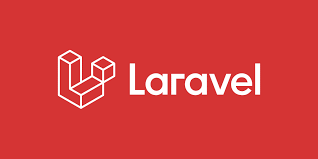Docker has revolutionized web development by offering a consistent, reproducible, and scalable environment for developers. When combined with Ubuntu, an open-source and widely used operating system, Docker enhances development workflows by ensuring dependencies and configurations remain uniform across different machines. This white paper explores how Docker can be leveraged for web development on Ubuntu, highlighting key use cases and benefits.
White Paper: Leveraging Docker for Web Development on Ubuntu
Introduction
Docker has revolutionized web development by offering a consistent, reproducible, and scalable environment for developers. When combined with Ubuntu, an open-source and widely used operating system, Docker enhances development workflows by ensuring dependencies and configurations remain uniform across different machines. This white paper explores how Docker can be leveraged for web development on Ubuntu, highlighting key use cases and benefits.
Why Use Docker for Web Development?
- Consistency: Docker containers ensure that all developers and environments (local, staging, production) use the same software versions and dependencies.
- Isolation: Each project runs in a self-contained environment, avoiding conflicts between dependencies.
- Portability: A Docker container runs the same way on any system, reducing "it works on my machine" issues.
- Rapid Setup: Developers can quickly set up a project by running a single command, reducing onboarding time.
- Scalability: Containers allow easy replication of environments and microservices for scaling applications.
Installing Docker on Ubuntu
- Update package listsudo apt update
- Install Dockersudo apt install docker.io
- Verify installationdocker --version
- Start and enable Dockersudo systemctl start dockersudo systemctl enable docker
Use Cases of Docker for Web Development
1. Local Development Environment Setup
Developers can create isolated environments for different projects using Docker. For example, setting up a Node.js-based web application can be streamlined using a Dockerfile:
FROM node:14 WORKDIR /app COPY package*.json ./ RUN npm install COPY . . EXPOSE 3000 CMD ["npm", "start"]
Steps:
- Build the image:docker build -t my-web-app .
- Run the container:docker run -d -p 3000:3000 my-web-app
2. Multi-Service Applications with Docker Compose
Many web applications require multiple services (e.g., a database, a backend API, and a frontend). Docker Compose simplifies managing multi-container applications.
Example: Running a Node.js app with MongoDB
version: '3.8' services: web: build: . ports: - "3000:3000" depends_on: - db db: image: mongo ports: - "27017:27017"
Steps:
- Start all services:docker-compose up -d
- Stop services:docker-compose down
3. LAMP Stack in Docker
LAMP (Linux, Apache, MySQL, PHP) is a popular stack for web applications. Docker simplifies its deployment by containerizing each component.
Example: Docker Compose for LAMP
version: '3.8' services: apache: image: php:7.4-apache ports: - "8080:80" mysql: image: mysql:5.7 environment: MYSQL_ROOT_PASSWORD: root
Steps:
- Run the LAMP stack:docker-compose up -d
4. Laravel Development with Docker
Laravel, a PHP framework, can be efficiently developed using Docker.
Example: Laravel Dockerfile
FROM php:8.0-fpm WORKDIR /var/www COPY . . RUN apt-get update && apt-get install -y \ libpng-dev \ && docker-php-ext-install pdo pdo_mysql CMD ["php-fpm"]
Steps:
- Build the Laravel container:docker build -t my-laravel-app .
- Run the container:docker run -d -p 8000:8000 my-laravel-app
5. Zend Framework with Docker
Zend, now Laminas, is another powerful PHP framework that benefits from containerization.
Example: Zend Docker Compose
version: '3.8' services: php: image: php:7.4-apache volumes: - .:/var/www/html ports: - "8080:80"
Steps:
- Start the Zend application:docker-compose up -d
6. Testing and Debugging Environments
Docker makes it easy to set up disposable environments for automated testing and debugging, ensuring clean and reproducible test runs.
- Example: Running Selenium inside a container for browser-based testing.
version: '3.8' services: selenium: image: selenium/standalone-chrome ports: - "4444:4444"
7. Continuous Integration & Deployment (CI/CD)
Docker is widely used in CI/CD pipelines to standardize application builds and deployments.
- Example: A GitHub Actions workflow for deploying a web app using Docker:
name: Deploy Web App on: [push] jobs: deploy: runs-on: ubuntu-latest steps: - uses: actions/checkout@v2 - name: Build Docker Image run: docker build -t my-app . - name: Push to Docker Hub run: docker push my-app
8. Cloud Deployment
Docker simplifies cloud deployments by making applications portable. Popular cloud services like AWS, Google Cloud, and Azure support Docker containers natively.
- Example: Deploying a web application to AWS Elastic Container Service (ECS)
- Steps:
- Build and tag the Docker image:docker build -t my-app . docker tag my-app:latest myrepo/my-app:latest
- Push to AWS Elastic Container Registry (ECR)aws ecr create-repository --repository-name my-app aws ecr get-login-password | docker login --username AWS --password-stdin <account-id>.dkr.ecr.<region>.amazonaws.com docker push <account-id>.dkr.ecr.<region>.amazonaws.com/my-app:latest
- Deploy using AWS ECS
Conclusion
Using Docker for web development on Ubuntu provides a robust, scalable, and efficient workflow. It simplifies environment setup, improves consistency across development and production, and enhances collaboration within teams. With use cases ranging from local development to cloud deployment, Docker is an essential tool for modern web development.
References
- Docker Documentation: https://docs.docker.com/
- Ubuntu Docker Guide: https://ubuntu.com/core/docs/docker-run
- Docker for Developers: https://www.codemag.com/article/1811021/Docker-for-Developers
